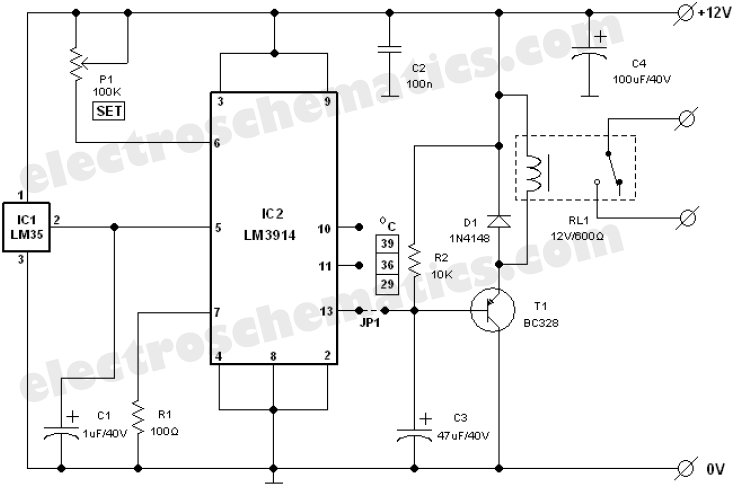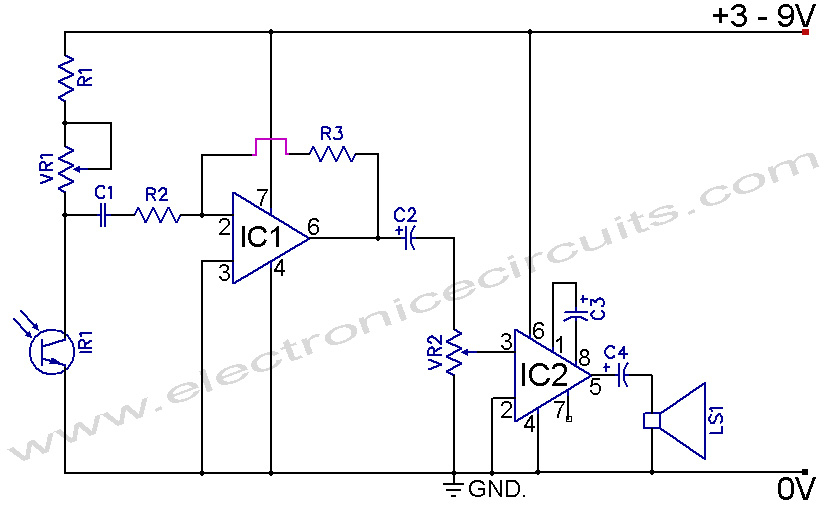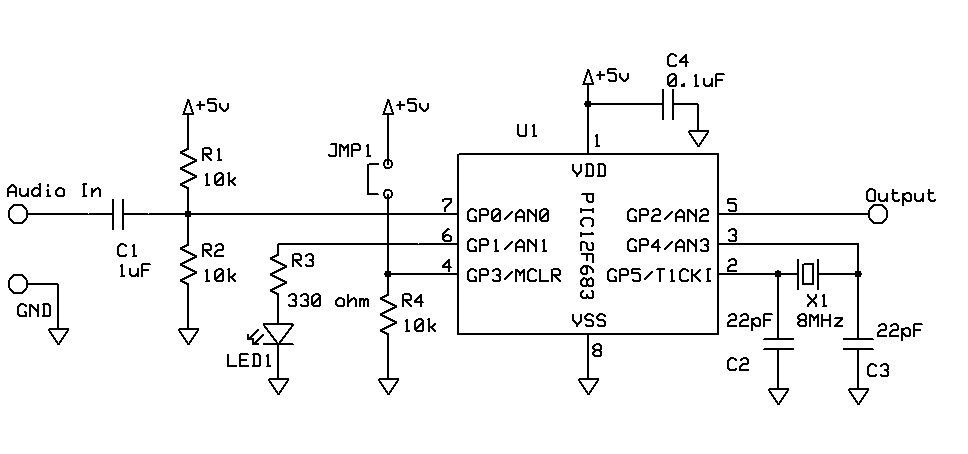
DTMF Remote Domestic System Control

The following circuit illustrates a DTMF (Dual Tone Multi-Frequency) Remote Domestic System Control Circuit Diagram. Features: DTMF signals can be transmitted over a radio.
The DTMF Remote Domestic System Control Circuit is designed to enable control of domestic appliances through DTMF signals, which are typically generated by pressing keys on a telephone keypad. This circuit utilizes a radio frequency (RF) transmission method to send DTMF signals wirelessly, allowing for remote operation of devices within a specified range.
The circuit typically consists of several key components: a DTMF decoder, a microcontroller, and an RF transmitter. The DTMF decoder receives the audio signal generated from the telephone keypad and converts it into a digital signal that can be processed by the microcontroller. The microcontroller interprets the DTMF signals and determines which appliance to activate or deactivate based on the received commands.
The RF transmitter is responsible for sending the processed signals to the corresponding RF receiver, which is connected to the domestic appliances. The RF receiver decodes the incoming signals and triggers the appropriate relay or switch, thereby controlling the connected devices.
In addition to the basic functionality, the circuit may include features such as feedback indicators (LEDs) to confirm the status of the appliances, as well as safety mechanisms to prevent unintended operation. Power supply considerations are essential, and the circuit may utilize battery-operated or mains-powered options, depending on the application requirements.
Overall, this DTMF Remote Domestic System Control Circuit provides a convenient and efficient method for remotely managing household appliances, enhancing user convenience and automation in domestic environments.The following circuit shows about ?DTMF Remote Domestic System Control Circuit Diagram. Features: DTMF signals can be transmitted over a radio to . 🔗 External reference
The DTMF Remote Domestic System Control Circuit is designed to enable control of domestic appliances through DTMF signals, which are typically generated by pressing keys on a telephone keypad. This circuit utilizes a radio frequency (RF) transmission method to send DTMF signals wirelessly, allowing for remote operation of devices within a specified range.
The circuit typically consists of several key components: a DTMF decoder, a microcontroller, and an RF transmitter. The DTMF decoder receives the audio signal generated from the telephone keypad and converts it into a digital signal that can be processed by the microcontroller. The microcontroller interprets the DTMF signals and determines which appliance to activate or deactivate based on the received commands.
The RF transmitter is responsible for sending the processed signals to the corresponding RF receiver, which is connected to the domestic appliances. The RF receiver decodes the incoming signals and triggers the appropriate relay or switch, thereby controlling the connected devices.
In addition to the basic functionality, the circuit may include features such as feedback indicators (LEDs) to confirm the status of the appliances, as well as safety mechanisms to prevent unintended operation. Power supply considerations are essential, and the circuit may utilize battery-operated or mains-powered options, depending on the application requirements.
Overall, this DTMF Remote Domestic System Control Circuit provides a convenient and efficient method for remotely managing household appliances, enhancing user convenience and automation in domestic environments.The following circuit shows about ?DTMF Remote Domestic System Control Circuit Diagram. Features: DTMF signals can be transmitted over a radio to . 🔗 External reference





